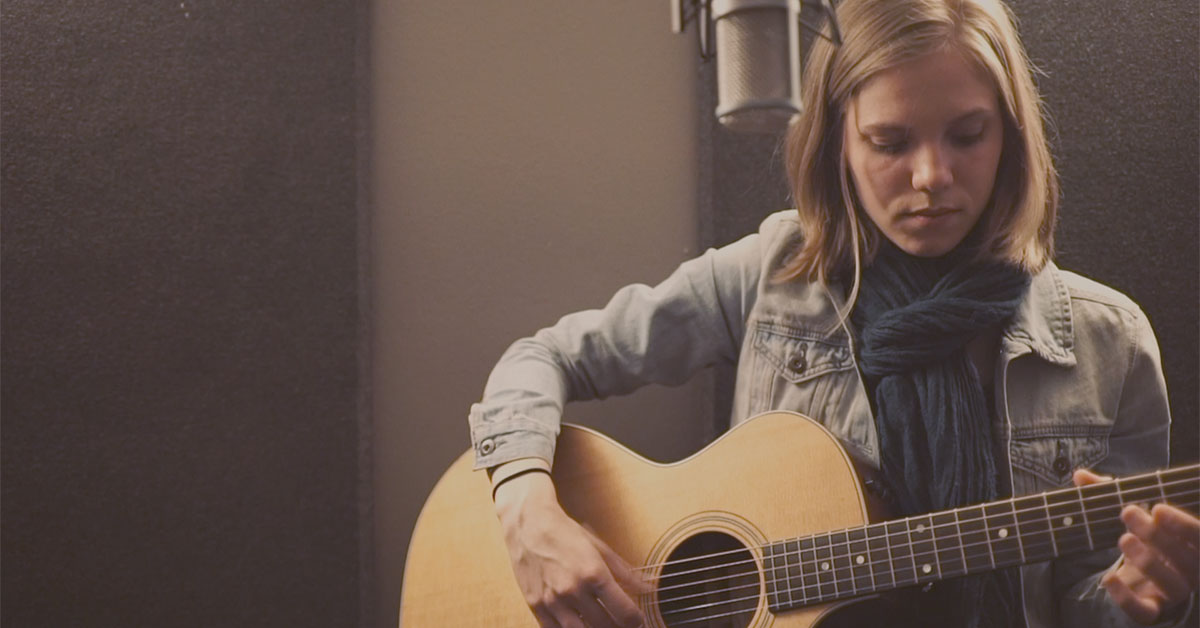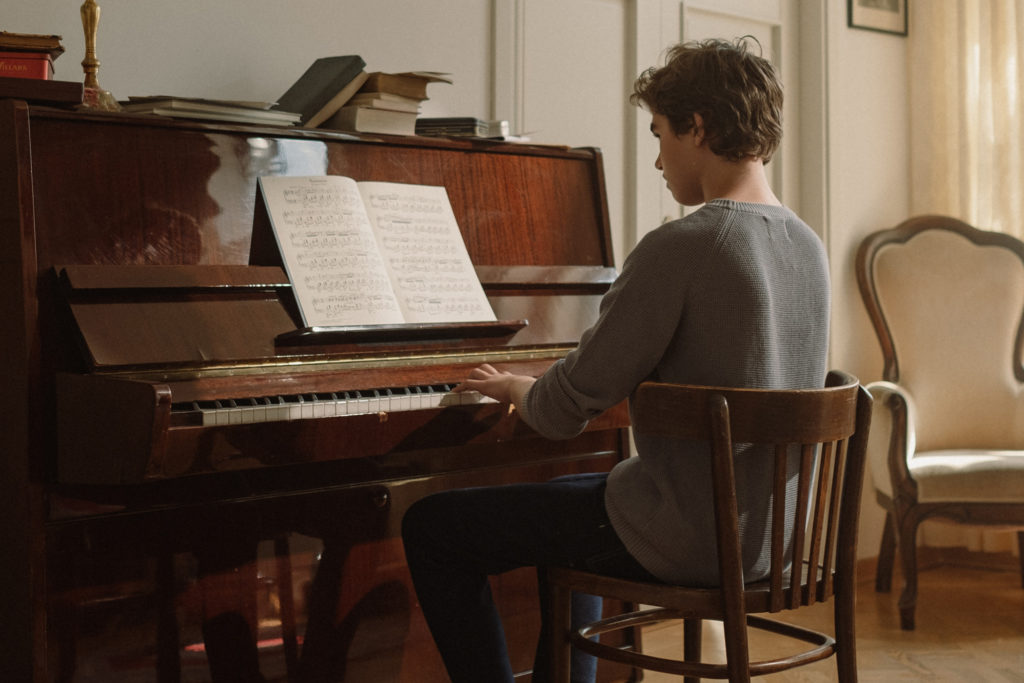+ Take your modern jazz piano and hip-hop beat making to new heights with Soundfly’s new course, Elijah Fox: Impressionist Piano & Production!
Ah, the dreaded memory slip.
If you’re like most musicians, you’ve probably experienced at least one in your performance history. I’m guessing that you’ve probably also had the experience of spending a sleepless night playing and replaying music in your head, in an effort to reassure yourself that you do indeed have everything memorized. Or maybe you’ve found yourself on stage, thinking not about the music, but worrying about whether you’re going to be able to remember what comes next…
It may not literally be life or death, but it can certainly feel that way at times.
Of course, then there are those for whom memorization seems to happen naturally. Easily. Almost without trying. What’s up with that? Are their brains just wired differently than ours? Or do they know something we don’t?
Let’s find out…
Roger Chaffin, a now-retired professor of psychology at UConn (and amateur flutist), has conducted a number of studies on the learning processes of high-level musicians. And several are related specifically to the memorization process, and provide some insights into how expert memorizers memorize.
Two Types of Memory

Type #1: Serial Chaining
It turns out that there are two types of memory that musicians rely on — and each has its own pros and cons. Which is helpful to know, to make sure we don’t put all of our memory eggs in the wrong basket.
The first type is called serial chaining. This is where playing one phrase cues up your memory of the next phrase, which cues up your memory of the phrase after that, and so on.
On the plus side, this type of memory develops naturally as you work on a piece, so there’s not much you have to do other than practice as normal. And it works pretty darn well too!
So what’s the downside? Well… serial chaining works well as long as the conditions of retrieval are close to the conditions of practice. Any deviations from our experience in the practice room, either internal or external, have the potential to weaken these “chains” which link one phrase or passage to the next. And if one of the chains break, we’re kind of screwed, because often, the only way to get back on track is to start at the first chain again.
It’s kind of like how most of us sing the alphabet song. For instance, take a moment to start singing the ABC song — but start from the letter F, AND DO NOT help yourself cue up the correct note by singing in your head from the letter A.
Not so easy, right?
I had a job in grad school that required doing lots of filing of records alphabetically. You’d think I would have figured out the alphabet by then, but it was surprising how often I had to sing the ABC song to myself to figure out which letter came after which. And even more surprising was how often I had to start at A. In fact, I still seem incapable of starting anywhere other than A or Q. Bizarre.
All this to say, if serial chaining is the only type of memory we have developed for our recital program, we probably should be a little bit freaked out about the reliability of our memory.
Type #2: Content Addressable Access
If serial chaining is like autopilot or cruise control, the second type of memory is like driving a stick. Called “content addressable access,” it involves creating specific “retrieval” or “performance cues” that are kind of like headings or chapter markings that help us get back on track at any of a whole range of locations throughout the piece.
So if everything goes to crap, and we break a chain, instead of having to backtrack and start at the beginning, we are never more than a few bars away from a fresh start.
The downside, is that these cues don’t just spontaneously appear on their own out of thin air. We have to take the time to intentionally create and rehearse them in practice. So it takes some effort and a bit of time. Though that’s arguably a small price to pay for the peace of mind which comes from knowing that you know a piece like the back of your hand.
So what do performance cues look like?
+ Learn how to marry theory, improvisation, and beat making to become a better pianist and producer, with Grammy-winner Kiefer’s Keys, Chords, & Beats.

Four Performance Cues
Well, there are at least four different kinds.
- Structural cues are natural breaks or logical sections that form the structure of a piece. Like the exposition/development/recap, or where phrases begin and end.
- Expressive cues are mood or character-based. Sections that you decide should be mysterious, or pensive. Or that communicate happiness, sadness, or sarcasm. Or involve characters who form part of a narrative in your head.
- Interpretive cues are also musical in nature, but related more to the hints that the composer has left us in the score. Like changes in tempo, phrasing, dynamics, and all those Italian words we suddenly realize we should have looked up when our teacher quizzes us in a lesson.
- Basic cues are technique-related, such as bowing, sticking, or fingering choices.
Taken together, these four types of cues add additional layers of information to the music. Kind of like landmarks that let us know if we’re on the right path or not, and help us get back on track if we start to lose our way. Though, just FYI, not all performance cues are created equal — the structural and expressive cues seem to be the most useful, with basic cues being the least helpful (and possibly actively unhelpful).
So… how exactly do these performance cues help with memory?
+ Read more on Flypaper: “Looking to Puzzles to Learn How to Piece Together Music.”
Mental Performance Scripts
Through observational studies of musicians learning and memorizing new works for performance (e.g., Chaffin et al., 2009), Chaffin found that these performance cues are created during practice sessions, and are rehearsed during practice as well.
In other words, rather than just starting a phrase mindlessly, expert memorizers seem to start and stop at these recovery points during practice, thinking about the structural, expressive, interpretive, or technical element involved. Over time, this creates a “mental script” or map of the piece, which gets encoded into memory along with the physical script (i.e., the technical execution of the piece).
“…this not only boosts the level of their musicianship, but also serves to anchor these performance cues more deeply into memory.”
So as expert memorizers work out the musical and technical details of a piece, making clearer and deliberate decisions about the musical structure, character, phrasing, fingerings, and what to focus on from phrase to phrase, this not only boosts the level of their musicianship, but also serves to anchor these performance cues more deeply into memory. Much as you might consciously pay close attention to street signs and landmarks as you practice navigating through and familiarizing yourself with a new city that you’ve just moved to.
Below is a graphical representation of what this kind of memory map might look like (just as an illustration – it’s not like you would necessarily write this out on paper away from the score, though I suppose you certainly could).

Take Action
So what can we take away from all of this?
Well, the big take-home for me is that memorization seems to be a skill; an active process that one goes through in the course of learning a piece, rather than something that just magically happens on its own with enough time and repetition.
And that thoughtfully engaging with fundamental aspects of the music when we practice — from observations about patterns in the music to decisions about phrasing and voicing and how this relates to mood, character, and emotion — lays the groundwork for how expressively we will play on stage, as well as how confident we will be in our memory.
After all, if we haven’t created or practiced a mental script in advance, our squirrelly little brains will probably be happy to create one for us. But one that is probably much more based in fear and anxiety, than the nuances and musical details that would make for a more engaged and compelling (and worry-free) performance.
Play Your Heart Out!
Continue your learning adventure on Soundfly with modern, creative courses on songwriting, mixing, production, composing, synths, beats, and more by artists like Kiefer, Kimbra, Com Truise, Jlin, Ryan Lott, RJD2, and our newly launched Elijah Fox: Impressionist Piano & Production.
—
Performance psychologist and Juilliard alumnus & faculty member Noa Kageyama teaches musicians how to beat performance anxiety and play their best under pressure through live classes, coachings, and an online home-study course. Based in NYC, he is married to a terrific pianist, has two hilarious kids, and is a wee bit obsessed with technology and all things Apple.




